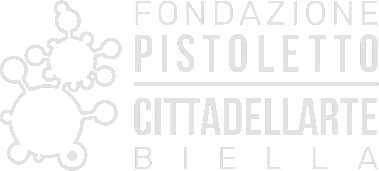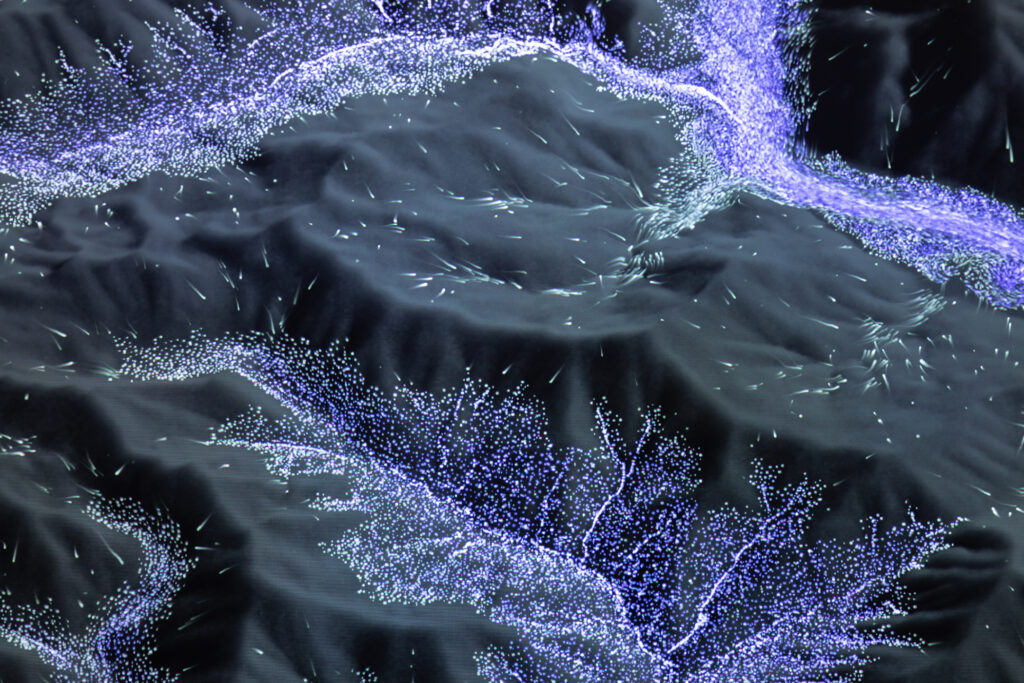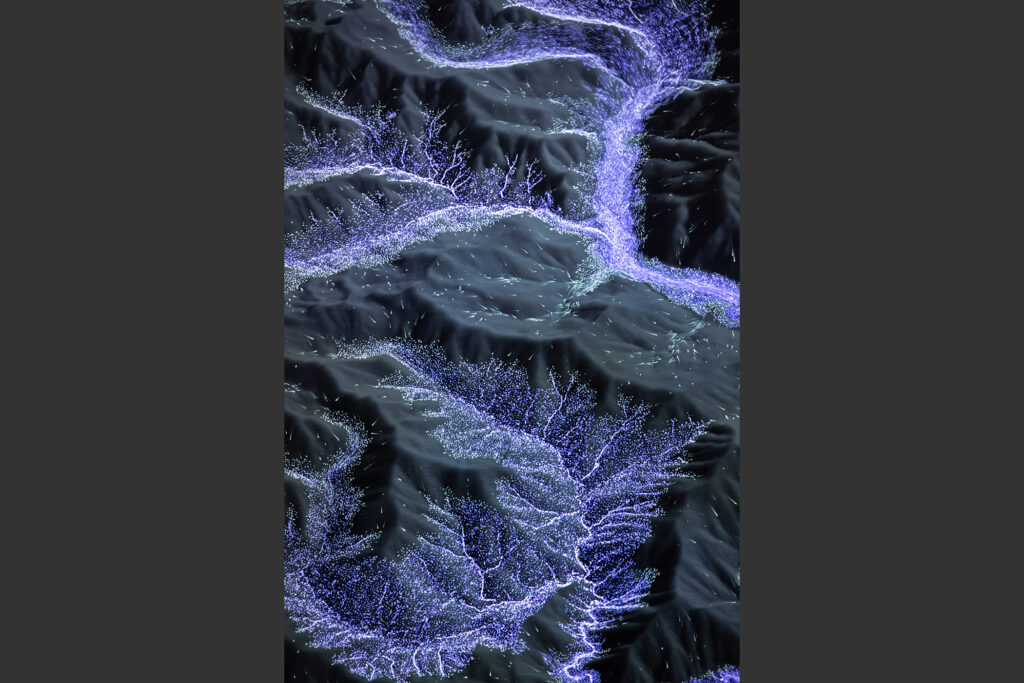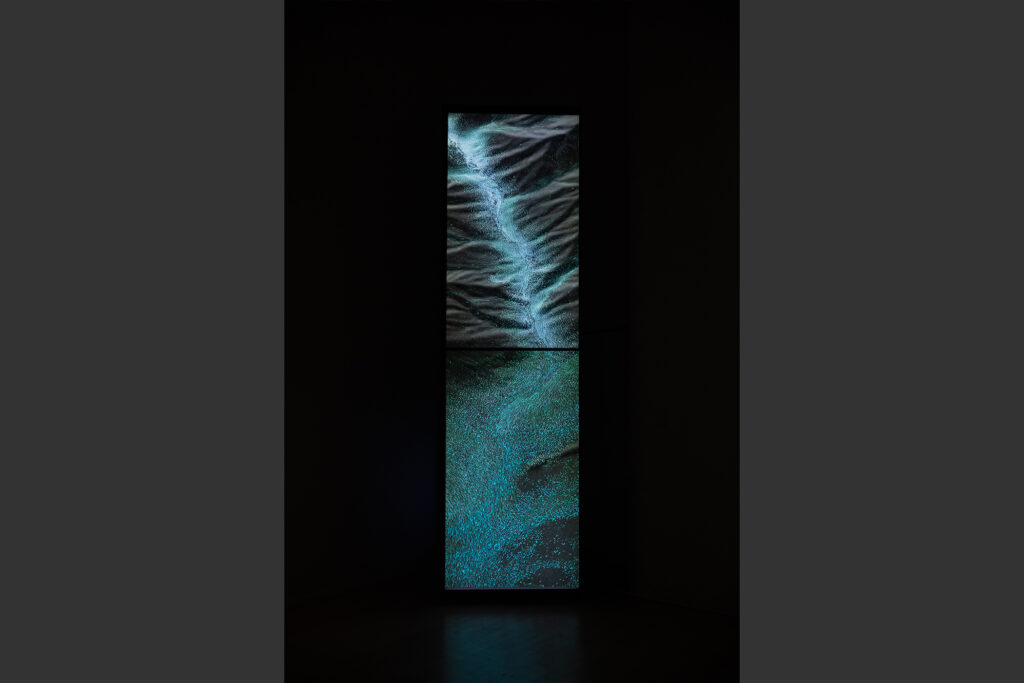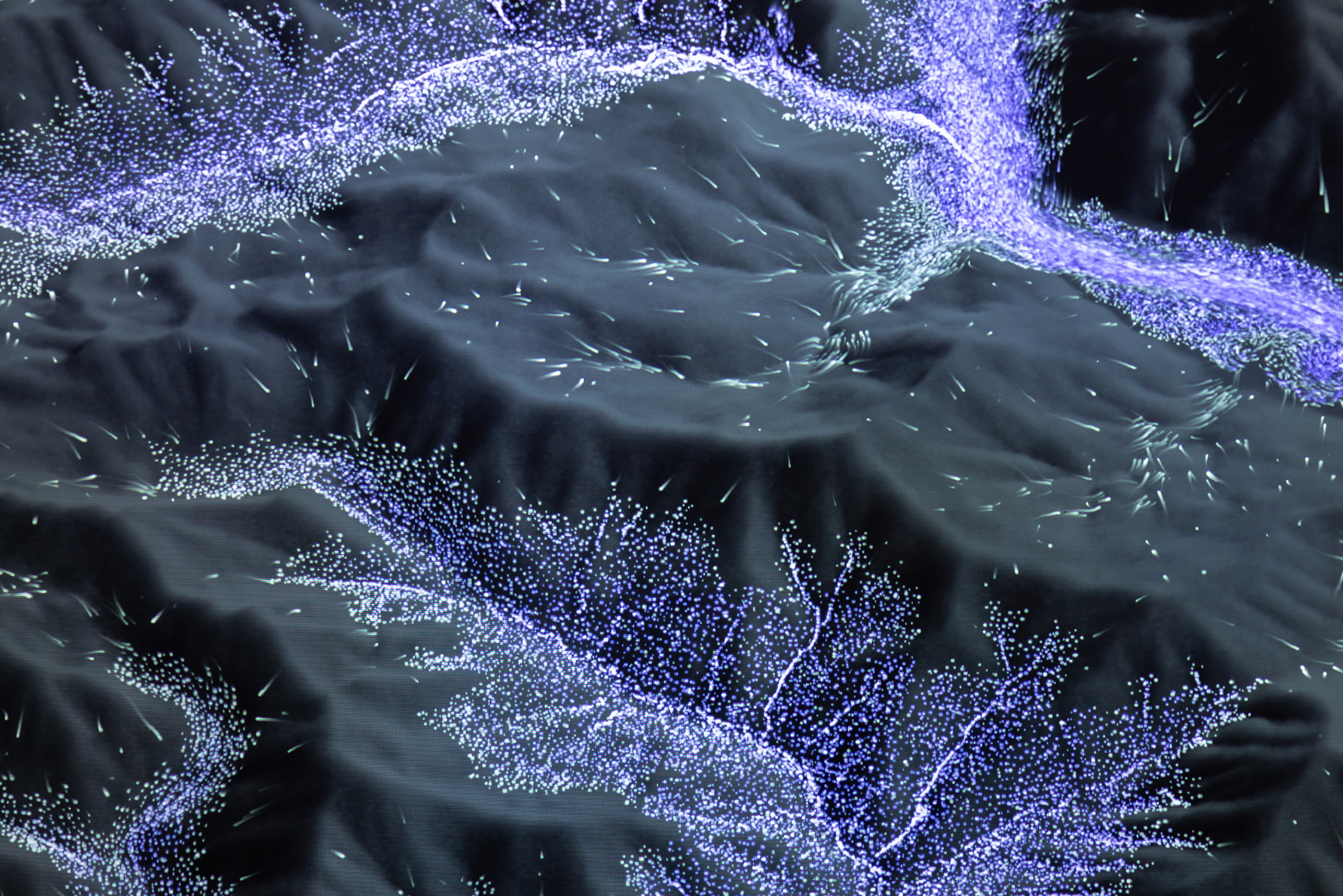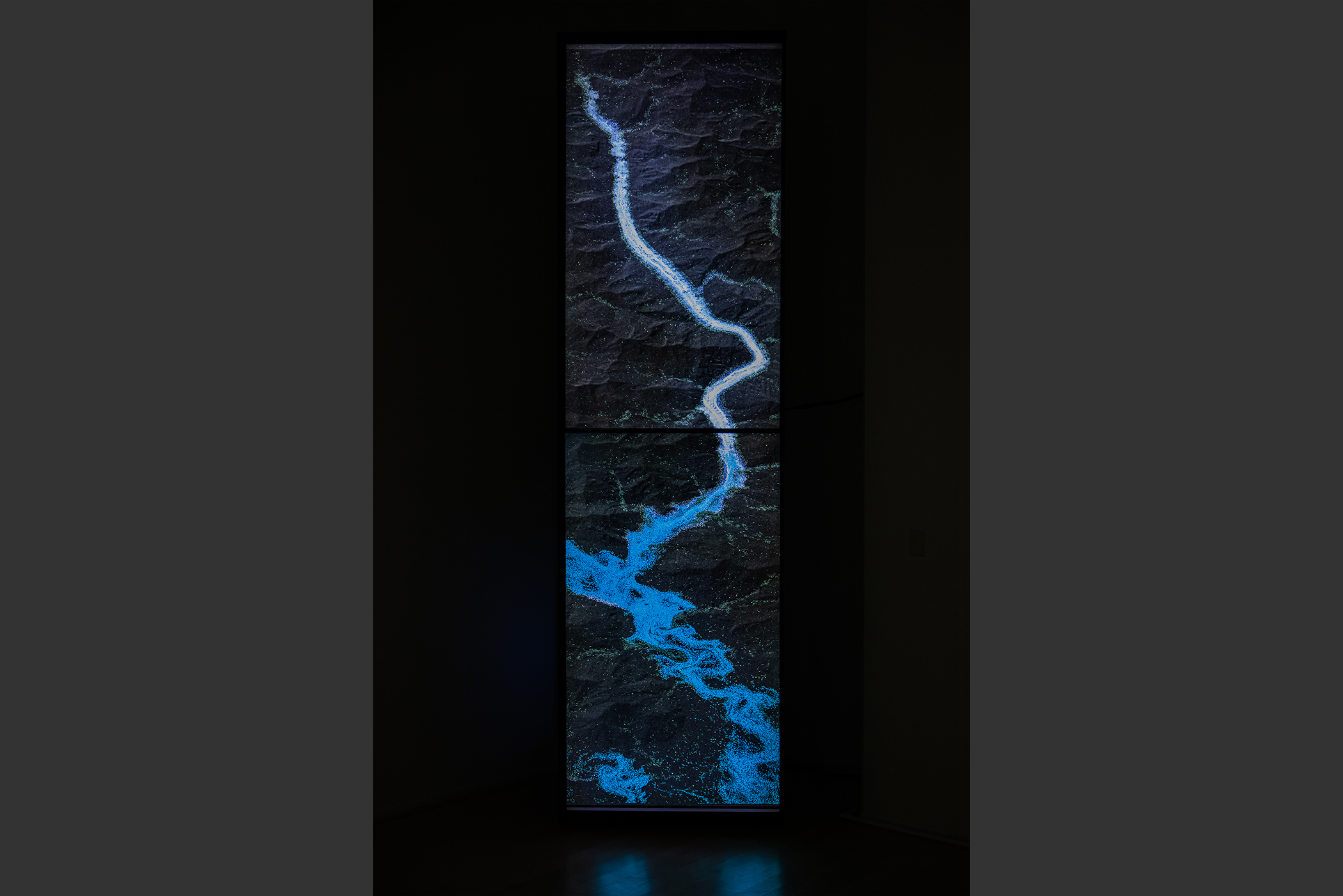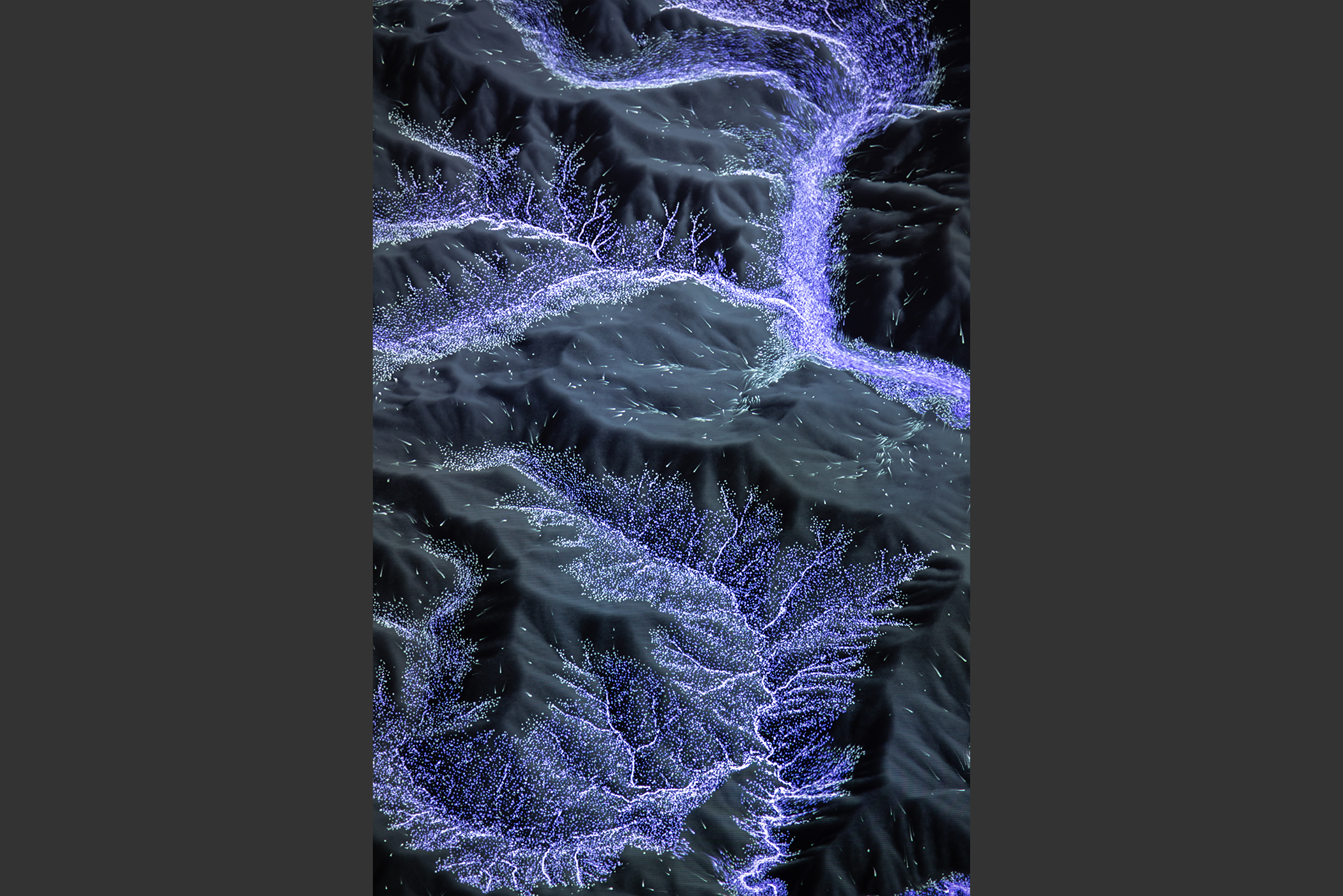Glacier Trilogy — Part 3: Simulating glacial water systems, 2022
Graphic PC, custom code, CO2 sensor, and Raspberry Pi, dimensions variable; Courtesy of the artist
Schubert’s Glacier Trilogy — Part 3: Simulating glacial water systems looks to glaciers as the origin points of river systems, representing the future availability of water. Part 3 presents a real-time simulation of melting glacial ice that runs over an elevation map of the Western Alps. A carbon dioxide sensor in the exhibition space determines specific parameters, connecting the exhalation of visitors directly to the complex patterns emerging in the simulated fluidic system. The artwork considers both the impact of humans on the environment and how we might use technology to improve our relationship with nature, which, the artist notes, is necessary for confronting the climate crisis.
Dr. Theresa Schubert is a Berlin-based artist, researcher, and curator exploring unconventional visions of nature, technology, and the self. Schubert holds a PhD in Media Art from Bauhaus-University Weimar. Her practice combines audiovisual and hybrid media in conceptual and immersive installations or performances. Organic matter and living organisms, algorithms, and artificial intelligence are not just materials in the artwork–the artist considers them as meaningful co-creators. She works with immersive video environments and 3D Laser Scanning to challenge modes of perception and question the human-machine relationship in hyper-technological societies, where the nature-culture divide seems to dissolve in the digital realm.
This presentation of Glacier Trilogy — Part 3: Simulating glacial water systems is supported by The Beall Family Foundation and Getty. The artwork was realized as part of S+T+ARTS4Water with funding from the European Commission. Programming was conducted by Sage Jenson.
